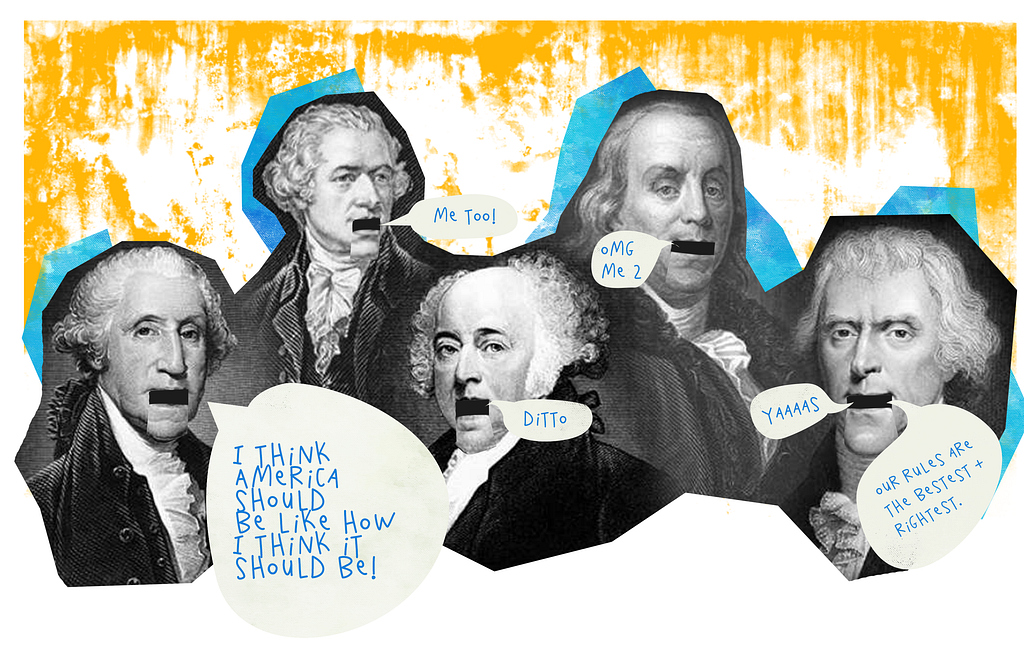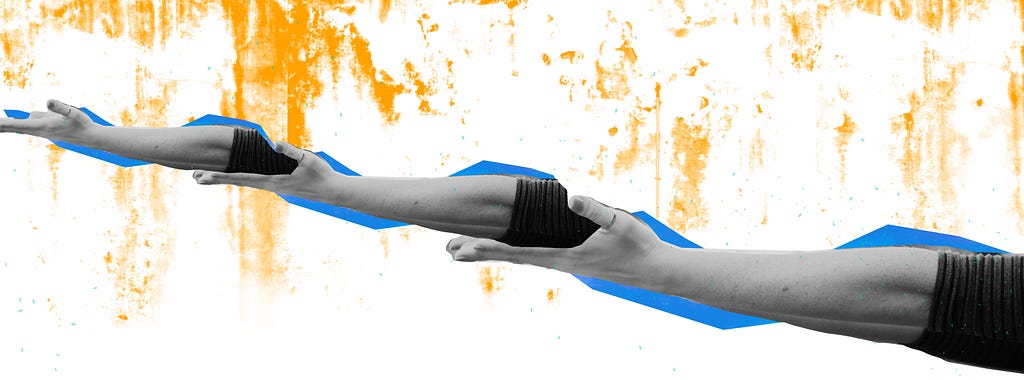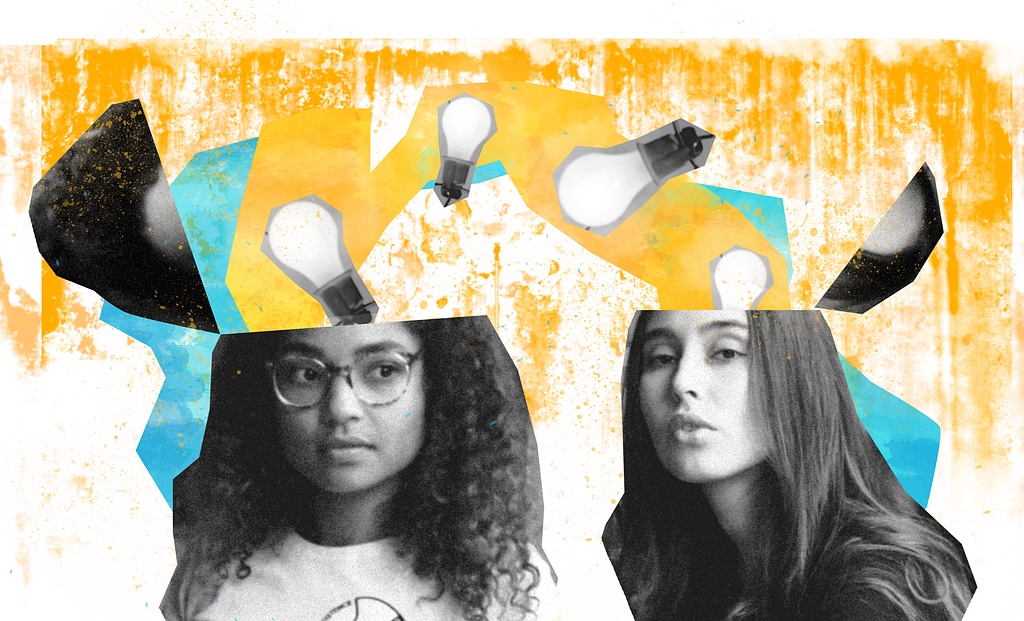Latest news about Bitcoin and all cryptocurrencies. Your daily crypto news habit.
 How inclusive and diverse dialogues will help build this system of the future.Have you ever visited a blockchain company, explored their site and read their whitepaper — but had no idea what they were working on?Or joined a community of crypto folks and felt like your voice wasn’t represented enough?You are part of the 99%.
How inclusive and diverse dialogues will help build this system of the future.Have you ever visited a blockchain company, explored their site and read their whitepaper — but had no idea what they were working on?Or joined a community of crypto folks and felt like your voice wasn’t represented enough?You are part of the 99%.
Even though the terms blockchain, cryptocurrency and ICOs have become buzzwords, there are still many who don’t know what it is, how it works or what it does.
Is this an issue? Yes. Because ecosystems and infrastructures can be influenced by the 1% — defined in this case as the early adopters, the most influential or the loudest. The 1% is not a representative demographic of the mass blockchain/ crypto consumers of the future. Many of them are technological evangelists; and while some may argue that early adopters usually don’t represent mass consumers, in this case, it’s important to have as diverse a view as possible because we are still defining the foundations of this new technology.
Think about voting. Imagine if there are 100 people supposed to be voting for companies designing the future, and that everyone will be affected by the outcome of the vote. Yet, only 10 people vote while 90 abstain. Does it matter that only 10 people are voting for the future, instead of 100 percent of the people?
Yes. It makes a big difference. And I would hope to think that you think so too.
Creating a system is easy. Changing a system as it continues operating is near impossible.
Here’s an example:
When the Founding Fathers created the Constitution hundreds of years ago, they had a very specific and similar set of interests rooted in 18th century American political philosophy. To this day, the American government functions on that political philosophy.
But you know who was left out of the conversation deciding what kind of country America should be? Everyone except for white men feeling the pain of British Imperial politics. Over the years, enslaved and marginalized Americans fought to break and change the unjust system that America was built upon, with successes but equally, with great struggle and conflict. To this day, people are still fighting to change the systemically unequal state and oh, how change is taking its sweet time.
Systems can empower; but they can disempower just as much if people don’t take considerations of the whole early on. That’s why the conversation around blockchain has to open up to a greater population now, as its foundations are being established.
Will Blockchain Go Down the Same Route?
 One example of “homogeneous early adopters” — Source
One example of “homogeneous early adopters” — Source
Yes, very much so if we repeat the same cycles of letting the more homogeneous early adopters pave the policies, systems and use cases for this technology.
Blockchain has the possibility of being different. This whole vision around decentralized networks and non-governed systems matters because it creates economic access and participation that did not exist before. At its core, it’s really a humanitarian conversation.
It’s not uncommon for lots of blockchain and cryptocurrency conversations to center around technical jargon, because so much of the current interests around it are directly connected to the technical aspects of it.
We also occasionally see how discriminatory the current climate can be towards those who don’t quite fit the expectations of who someone in blockchain might be — when actually there is an increasing number of “non-archetypal” participants in the conversation already. Linda Xie, founder of Scalar Capital, writes a well-articulated piece on how that bias translates negatively in social contexts here.
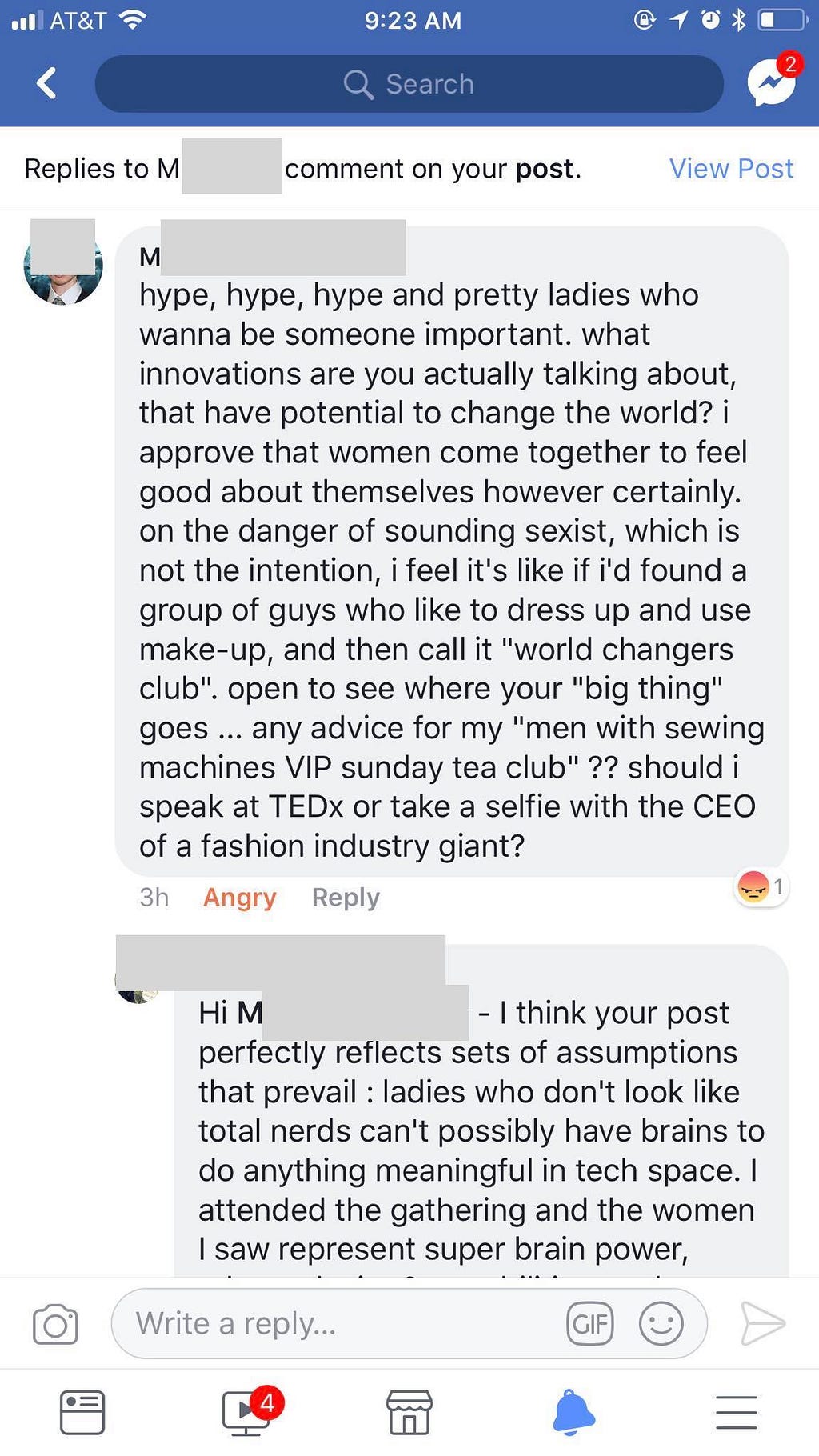
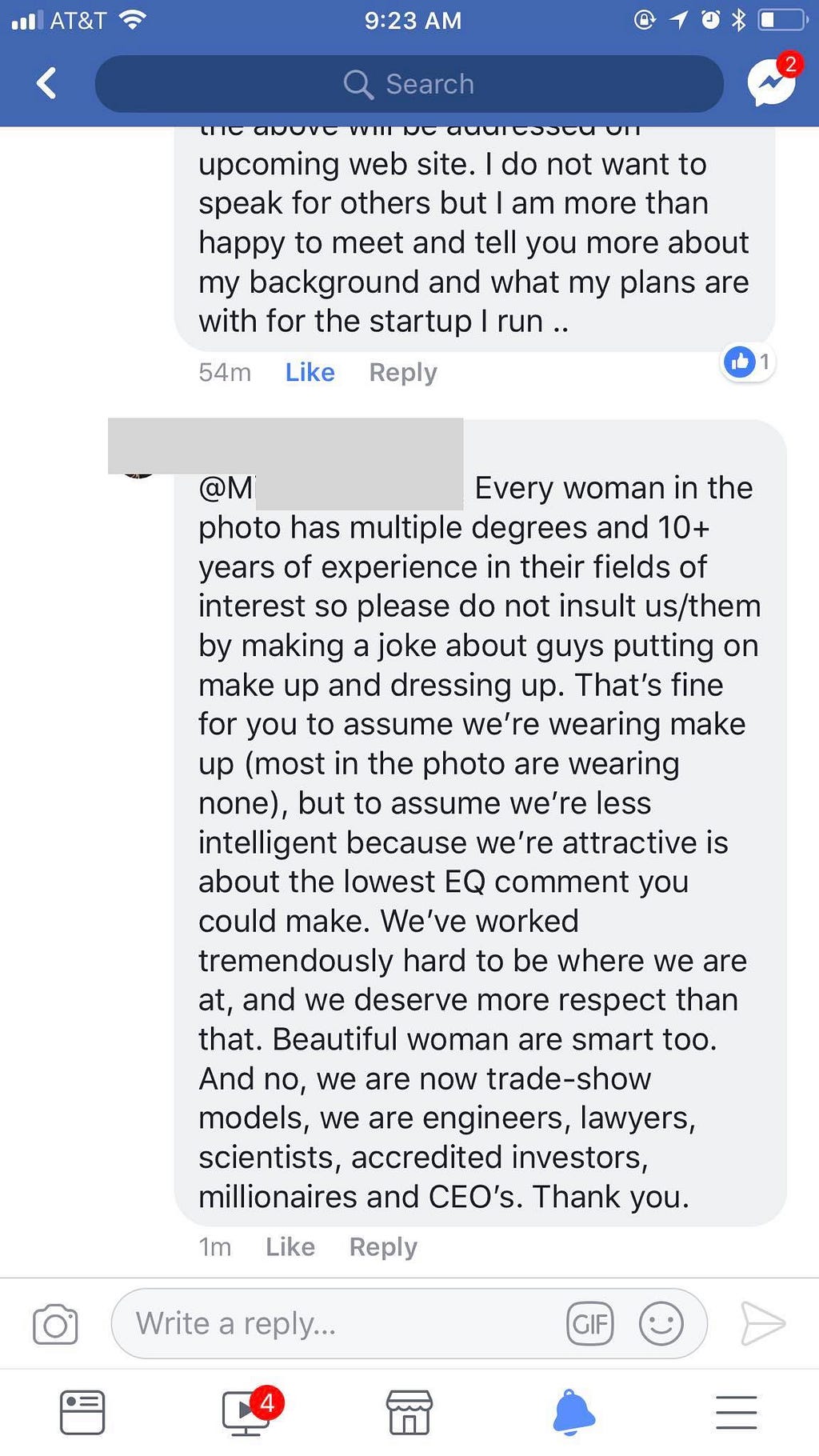 A post that reflects the biases that are still prevalent in this space.
A post that reflects the biases that are still prevalent in this space.
Here are two key ways in which we can drive an inclusive discussion forward.
Empower, Don’t Disempower
A lot of people are doing interesting work in blockchain and cryptocurrency. Due to the nature of its technology, there are emerging economies and social communities implementing it — with Africa being one of the possible great frontiers for it and Black communities embracing it. In Myanmar, there are over 500 people in the blockchain facebook group, a compelling number considering less than 3% of the population were using the internet a couple years ago. Maiden, knowing the space needs more diversification, supports LGBTQ people to learn blockchain skills.
However, there isn’t much diversity amongst the different “top” players in the blockchain space globally. If you look at these two lists (List 1 and List 2) of “important” people in the blockchain space, less than 15% are women, POC or international. Limiting the limelight can be enough to reduce varying perspectives and as a result, main discussions are not representative of the bigger population.
When that happens, the rest of the world watching what is unfolding within blockchain sees characters that are (most likely) foreign to them. They can’t relate. They don’t get as much inspiration as to how they can incorporate what others are doing into their own societies. They begin to see the technology in the lens of those who have voices and the platform to project their vision into the masses.
If we’re talking about creating change for the better, we should be bringing light to the work being done across different communities and countries, so that we can create more spaces for a variety of voices.*
Here are some things you can learn and do.
Better representation matters (and if you need reasoning, watch this video).
*The blockchain community is generally very welcoming, more than other tech spaces, I’ve found. However, it can be at least ten times more open and accessible to others, IMO. Which brings me to…
Pass on Knowledge
We also need to make it easier for people to get involved and lower the barrier of entry. One way to do this is by presenting more creative, unique and easy explanations of blockchain technology, so that more people feel comfortable approaching it rather than overwhelmed or hesitant.
This technology is still so new that the learning curve is high and it’s hard to imagine how it looks like and works. By giving people the power to imagine your system, you are giving them an understanding of how everything works. By doing so, we gain a more educated group of diverse folks who will have rich dialogues about the function, purpose and mission of blockchain technology.
Why Do I Care?
I’m an blockchain information designer, focusing on synthesizing high-level concepts and information in this space and translating them to simple explanations and visuals. I’ve condensed protocols, whitepapers, blockchain, ledgers and ICOs into one-shot infographs. I do this because I believe it’s so important to lower the barrier to entry into the technology.
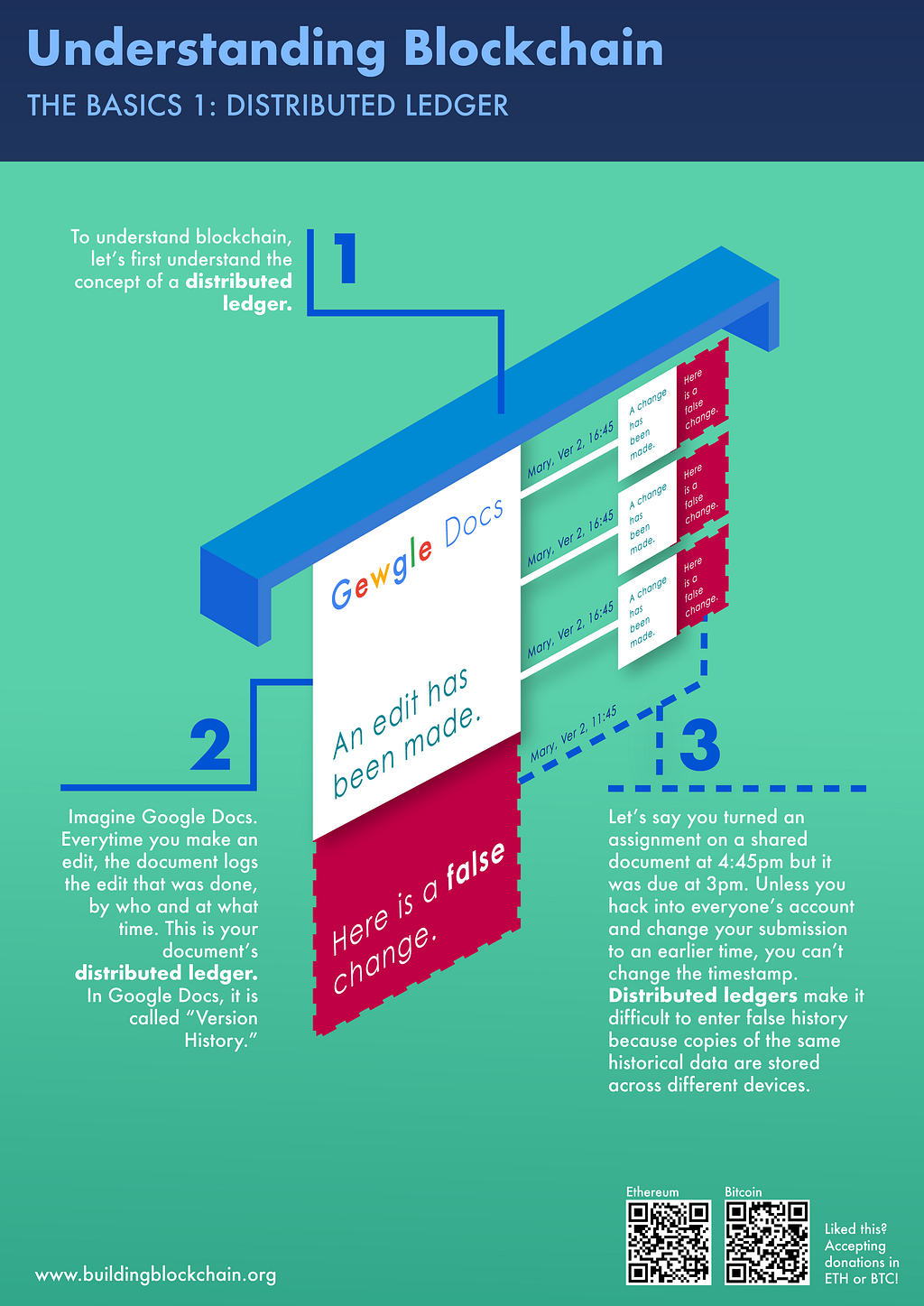
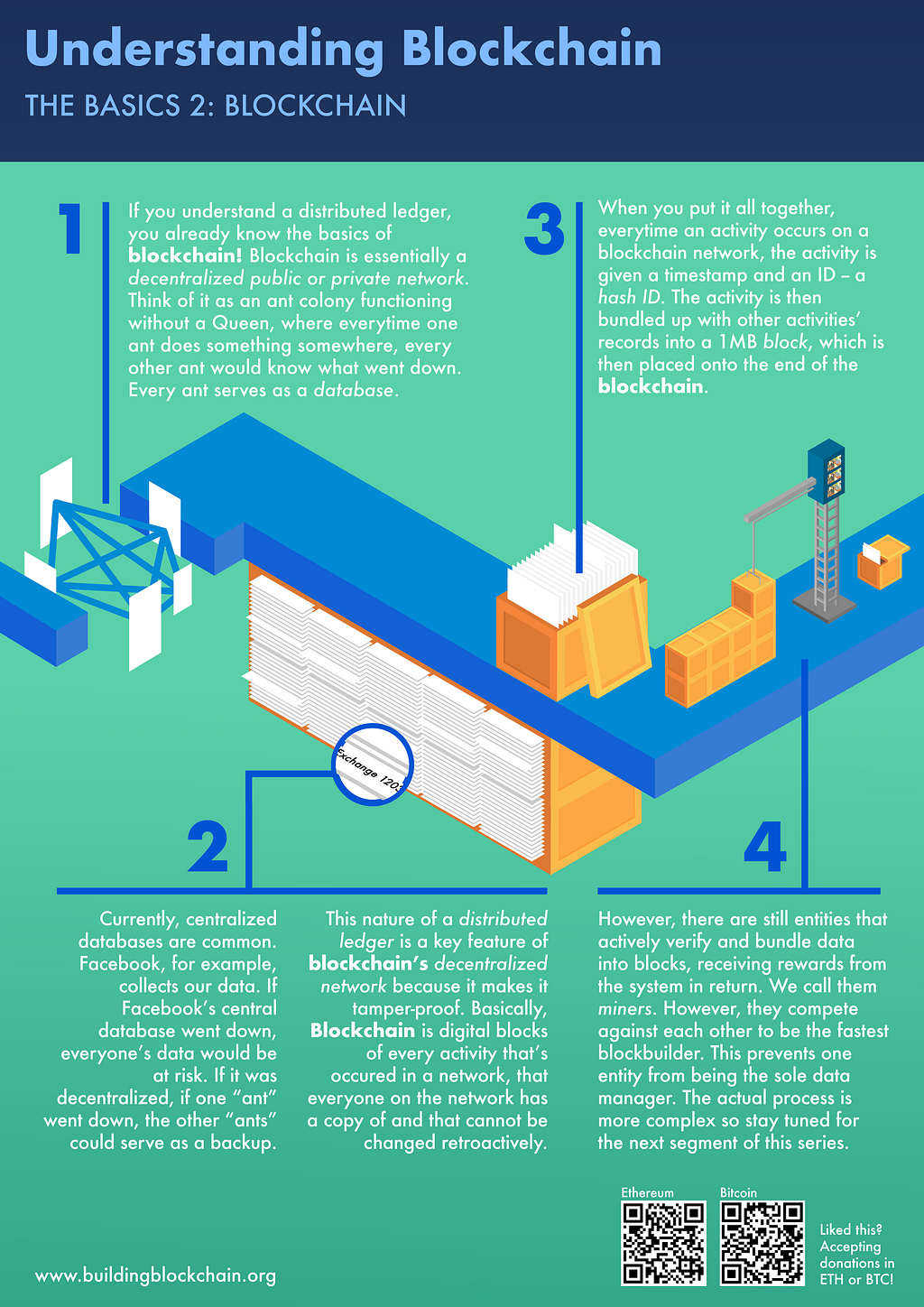
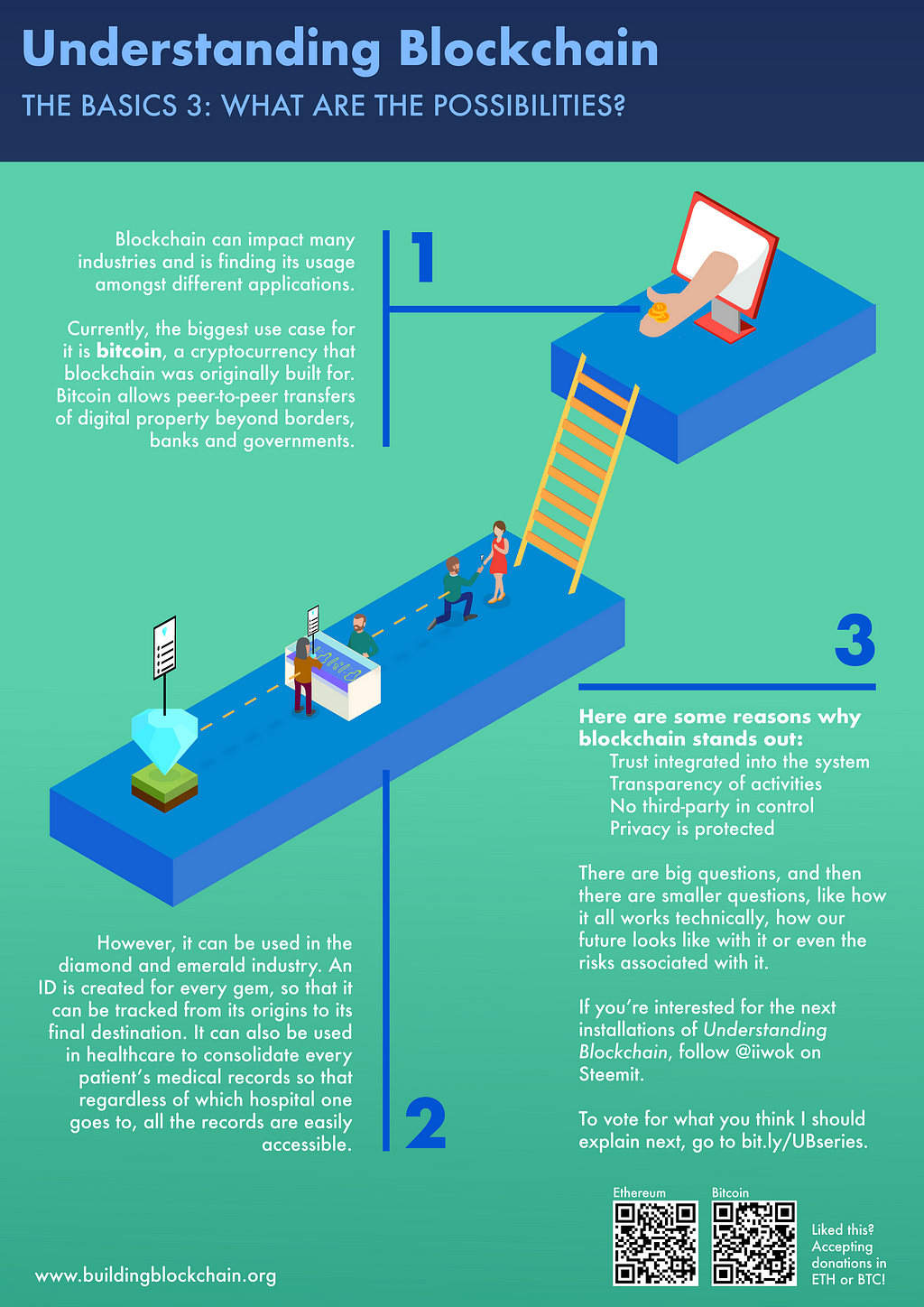 A few examples of my Intro to Blockchain explanations.
A few examples of my Intro to Blockchain explanations.
By creating that space for others to enter and helping them transition from off-chain to on-chain, we can open up so many more possibilities for blockchain in the future.
It’s time to flip those 1% discussions to 100% dialogues, and it has to start now.
Do you want to synthesize your blockchain/ crypto company into visuals and structure your information? Hit me up! I do contract design for blockchain projects. Here are some of my pieces on Building Blockchain and my portfolio.
All graphics and images designed by Saya Iwasaki unless otherwise indicated. Original photos from Unsplash.
Blockchain is a “1%” Conversation, and That Needs to Change was originally published in Hacker Noon on Medium, where people are continuing the conversation by highlighting and responding to this story.
Disclaimer
The views and opinions expressed in this article are solely those of the authors and do not reflect the views of Bitcoin Insider. Every investment and trading move involves risk - this is especially true for cryptocurrencies given their volatility. We strongly advise our readers to conduct their own research when making a decision.
